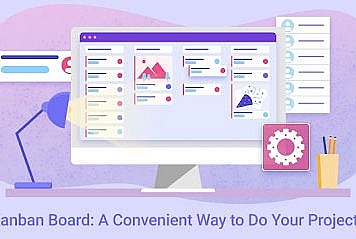Having a responsive web design is not just an unnecessary requirement anymore; it is a basic necessity for businesses. As users are increasingly using mobile devices to access the internet anytime, it is of high priority for companies to develop effective, responsive designs for their websites. According to a survey, there are more than 2.6 billion smartphone users in the world. A responsive design provides an optimal user experience to desktop users and offers a similar experience to mobile users.
Generally, there are ways to provide a better user experience to users – responsive design and mobile-first design. Responsive design is one that adjusts the web pages as per the device interface, whereas mobile-first design requires developing a separate mobile version of the site. Both these approaches have their own pros and cons. Developers use both these approaches based on their requirements.
Businesses are now moving towards responsive web designs for their business site, as they can adapt to every screen size and resolution effectively. Furthermore, considering the number of devices available in the market, it’s not easy to create a mobile-first design for every device and mobile browser.
But, how can you develop a responsive website that performs well across all the platforms? Are there any specific vital factors that play a critical role in effective, responsive design?
If you’re looking for answers to the above questions, you have come to the right place. In this informative article, we will highlight the seven critical factors of responsive design that can be implemented for every website.
-
Improving Performance
One of the critical factors behind the failure of a responsive design is poor performance. As responsive layouts are optimized for mobile devices, they should have incredible performance across all devices. However, most websites aren’t able to provide the required performance across all platforms. According to research, users abandon a website if it takes more than 3 seconds to load and move on to another resource. This clearly proves how performance can impact the online presence of your site.
To improve your site’s performance, you need to make sure of the following factors, including:
- Clean and semantic code
- A well-structured responsive design
- Fluid images
- A good web hosting server
- Optimized media content
If you follow the above metrics for your responsive site, it will drastically improve the website’s performance.
-
Screen Size
A web app is accessed across various devices that have varied screen sizes and resolutions. Screen size is the diagonal measurement of a physical screen, such as desktop, tab, iPhone, mobiles, etc. When designing a responsive website, pay attention to the screen sizes on which users will access your web app. A responsive web design adjusts itself according to the device screen size by changing the content, images, and icons. So, analyze the devices that can be used to access your web app, and then design the website based on those screen resolutions.
-
Use Fluid Grids
Fluid Grids helps in creating a website layout based on the percentage values rather than setting pixels. Let’s assume that the width of your site’s content on a desktop screen is 930px, but your targeted pixels are 320px on mobile. So, to achieve this result, the results work out to be 320/930, which is equal to 34.4%. When you apply this to a mobile screen, the layout will automatically adjust to it.
A responsive grid is generally divided into columns, and the height and width of the layout are scaled. The proportions of the site depend on how large the screen is. Moreover, you can set your own rules for the grid by modifying your site’s CSS and other HTML code.
-
Whitespace
Designers often overlook whitespace as they don’t believe it can help users. But, in reality, it could be a game-changer for you, as it helps readers focus on your content. While designing a responsive site, the top priority is to provide users with a comfortable reading experience. For instance, you need to ensure that the padding and margins do not disappear on smaller screens. Also, the font size and line spacing must adjust to the relative amount of whitespace on the screen.
Though there is no direct method to determine the amount of whitespace you need on a web page, the ideal approach is to browse the website yourself and analyze it from a visitor’s point of view.
-
Finalize the Elements to Include on Small Screen
A responsive design doesn’t mean replicating your website on different devices. It means offering a consistent user experience across all platforms. If you want to provide the best user experience out there, you’ll have to compromise on a few things on the small screens.
For instance, the menu and navigational options take huge space on a desktop site, which can be turned into an icon or button on the mobile screen to consume minimum space. The navigation panel is very important for mobiles, but it won’t be much appealing if you display it like the desktop. There are certain methods to collate navigation menu and content. For example, you can use the hamburger style menu, a simple drop-down selection, or tabs with scrolling functionality.
Furthermore, you can set rules or configure your code to leave out some aspects by modifying your website’s CSS. Doing so might take some extra time and effort, but it will be worth it.
-
Optimize Media Content
A responsive design always includes some media elements like pictures, videos, or audio, and it plays a vital role in the design. It helps you make an emotional connection with your visitors while enabling them to visualize the product or service they’re interested in purchasing. Thus, it’s crucial to optimize the media content, especially images.
Despite improvement in the internet connection, images still need regular optimization for a responsive design. And there is one factor that directly impacts the image optimization on your phone screens – page loading speed.
Page loading is an essential component of responsiveness that influences both the user’s patience and page abandonment. Now, optimizing image while maintaining the page loading speed requires some specific actions, such as:
- Use a specific format for saving images like JPG or PNG
- Reducing the image size for the mobile screen using various tools
- Initializing breakpoints to reduce scaling and bandwidth issues
- Create rules in CSS to handle images on varied screens
By optimizing the images, you’ll be able to build a website that pleases every visitor.
-
Follow the Mobile-First Approach
As mentioned above, users prefer to access a website across mobile devices first. That’s why it’s imperative to follow a mobile-first approach while designing a responsive site. With a mobile-first approach, you’ll be able to develop a site that is responsive across all platforms. It will help you analyze how the images, text, logos, and other elements look on smaller screens. If the content displays appropriately without any problems, you won’t have any issues adapting your design to larger screens.
However, it is necessary to test your web app after designing, especially for mobile responsiveness. You can use either manual or automated testing to test your website. Considering the number of mobile devices available in the market, it is not feasible to use the manual testing approach, as it will consume a lot of time and resources. Thus, it is advisable to use automation testing for mobile app testing.
There are plenty of tools available to test web app for mobile sites. For example, LT Browser is an excellent tool that allows you to test your web app in real-time across more than 50+ mobile viewports. It is a mobile-friendly browser integrated with various features like live interactive testing, mirror view with sync scroll, scalable mobile web testing, and more. You can even test your locally hosted web apps without any inference.
Final Words
Designing a responsive website that matches everyone’s experience is critical for business success. It helps you earn potential visitors with a buying decision mind. But there are certain key factors that you need to follow to build a responsive site. In this article, we talked about seven key elements that every web designer should follow in order to design a responsive website.
Follow TechStrange for more Technology, Business, and Digital Marketing News.





